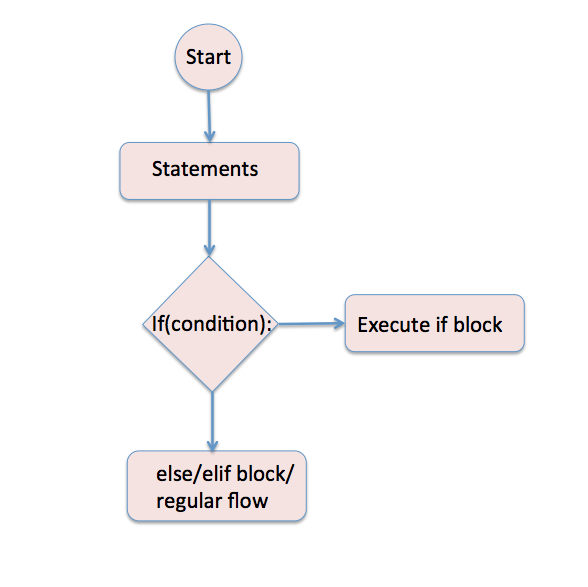Overview:
The "if" statement is an essential control flow statment in any programming language.
The "if" statement executes one of the blocks of python code based on a logical value,either
True or False, returned from a Python Expression. Hence, the "if" statment is a conditional statement.
Flowchart diagram for Python if Statement:

Syntax of an "if" statment in Python:
|
if <expression>: Python Statement 1 Python Statement 2 . . . Python Statement n elif <expression>: Python Statement 1 Python Statement 2 . . . Python Statement n else: Python Statement 1 Python Statement 2 . . . Python Statement n |
Semantics of an "if" statment in Python:
- One whole block of "if" statement can consist of
- One "if" suit
- Multiple suits of "elif" statements ("elif" stands for "else if" in Python Programming Language)
- One "else" suit
- Only one of the suits, either an "if" suit or an "elif" suit or an "else" suit will be executed, based on the boolean result of the expression provided.
- Python does not provide a switch-case block like the ones found in other programming languages.
- The "if" statement in the Python Programming Language also works similar to a ternary operator in other programming languages.
- The expression in the "if" statement can not be an assignment statment. Python really keeps things very simple, as defined in one of the language goals.
Example - Python "if" statement:
|
AnyInteger = input("Enter a Value:") |